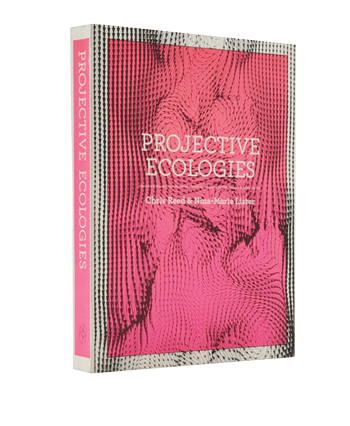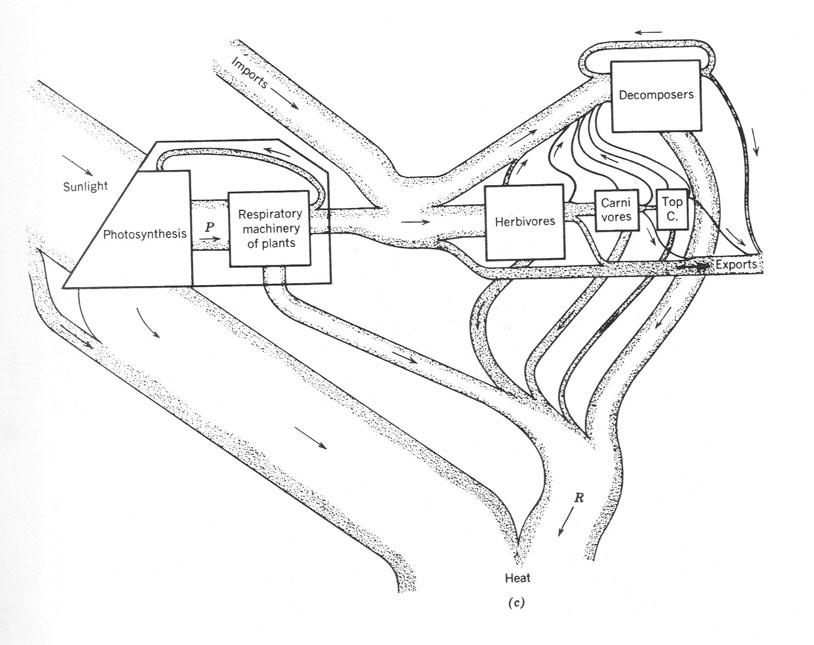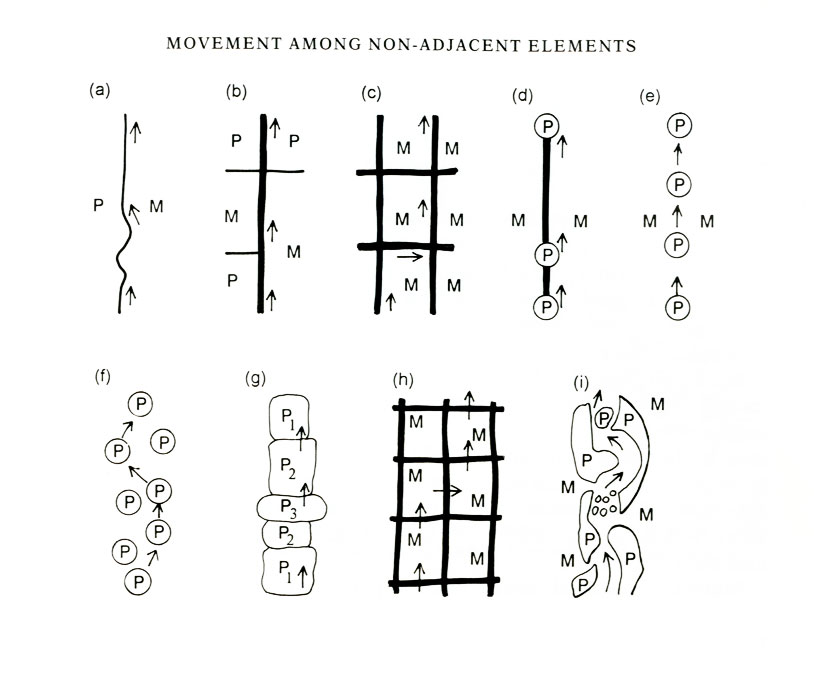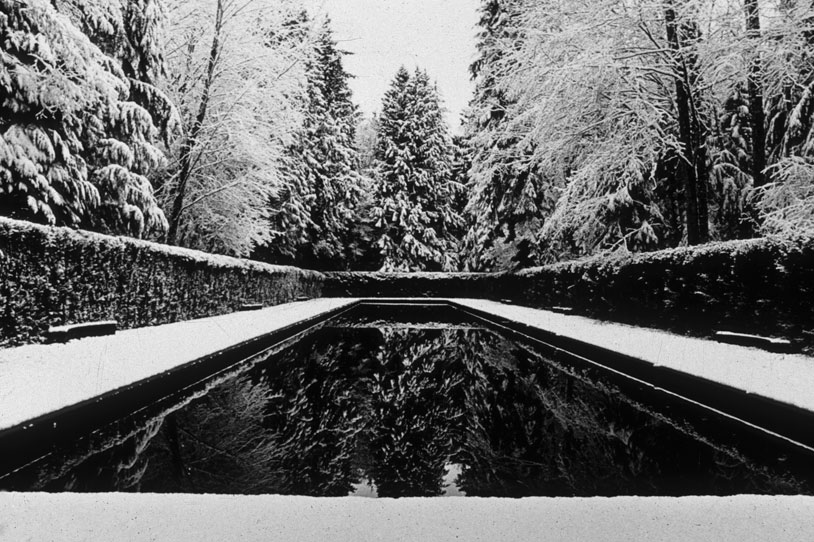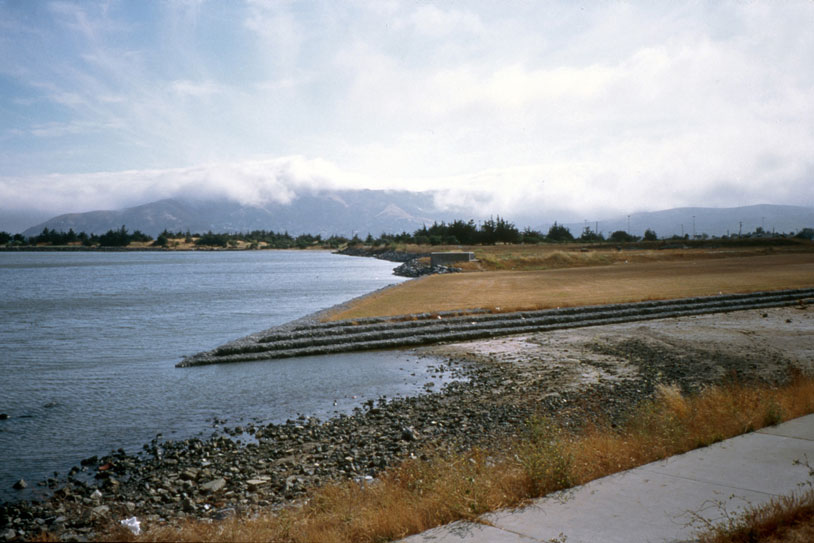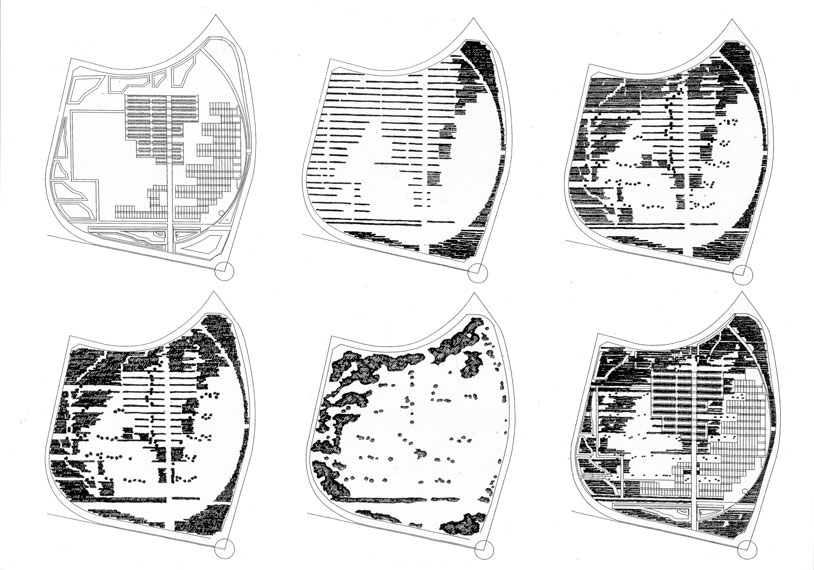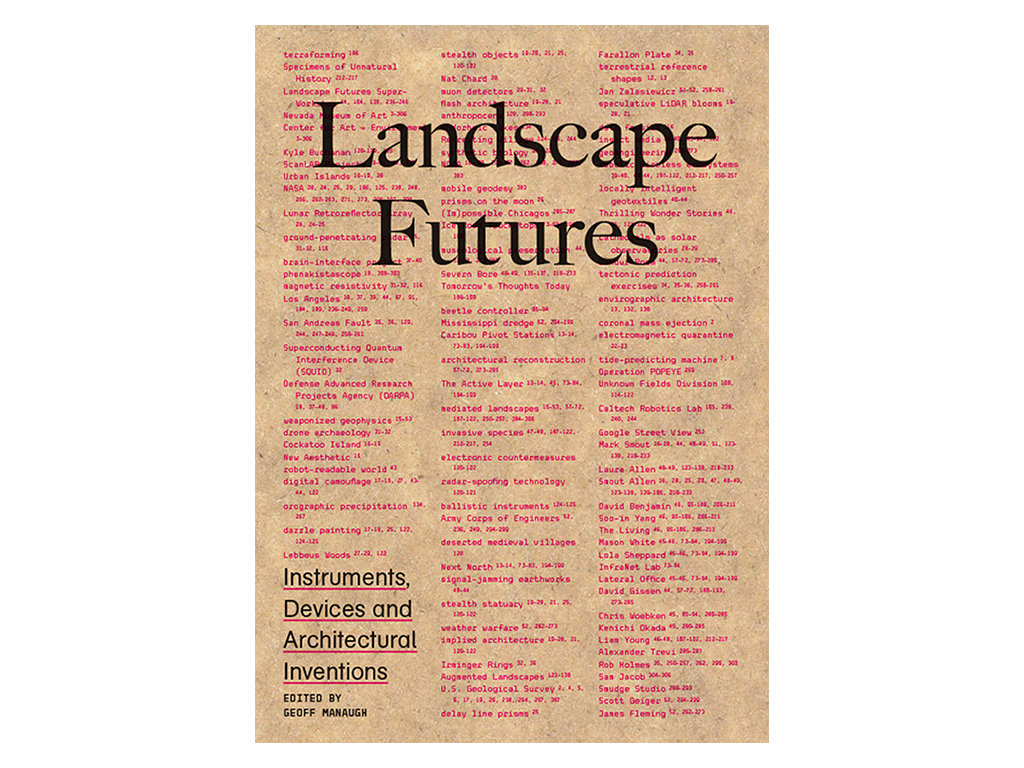The processes of which ecology and creativity speak are fundamental to the work of landscape architecture. Whether biological or imaginative, evolutionary or metaphorical, such processes are active, dynamic, and complex, each tending toward the increased differentiation, freedom, and richness of a diversely interacting whole. There is no end, no grand scheme for these agents of change, just a cumulative directionality toward further becoming. It is in this productive and active sense that ecology and creativity speak not of fixed and rigid realities but of movement, passage, genesis, and autonomy, of propulsive life unfolding in time.
James Corner, “Ecology and Landscape as Agents of Creativity” (1997) [1]
Ecology is, by definition, a transdisciplinary science focused on the relationship between living organisms and their environments. A relatively new science, its modern roots emerged in the early twentieth century with the work of Frederic Clements and Henry Gleason, American botanists who studied the interactions between plant communities, and Sir Arthur Tansley, a British botanist and zoologist whose research on the interactions between plant and animal communities and the environment led him to coin the term “ecosystem” in 1935. [2] The interdisciplinary work of these pioneers prompted the development of models of ecological succession that dominated plant biology during the early twentieth century and became the basis for the new integrated science of plants, animals, and the environment eventually known as ecosystem ecology.
The implications of this developing work were not limited to the natural sciences; in fact, popularization of these emerging world views was manifest in more widely read writings in the humanities and reverberated in other fields as well, including large-scale project management, governance, and planning. Complex adaptive systems thinking made its way into the design arts as landscape was being rediscovered as both model and medium for design, and the environmental movement was becoming mainstream.
Today “ecology” has been co-opted to refer to almost any set of generalized ideas about environment or process, rendering the term essentially meaningless. To recover a critical sense of ecology as a specific set of ideas—at once environmental, social, and mental (as Félix Guattari would argue)—that can continue to inform design thinking and practice, we start by identifying three important and parallel genealogies of ecology over the past three decades: in the natural sciences, the humanities, and design.
Natural Sciences
As a young science, and one focused on various aspects of living systems at different scales, modern ecology has been characterized by a schism between divergent approaches adopted by two major subfields. While ecosystem ecology began in earnest in the last three decades to include a complex systems perspective, population ecology remained largely fixed in a conventional scientific approach using reductionist modes of inquiry and experimentation as developed throughout the last century. [3] Both subfields, however, share three main areas of investigation that are designed to answer questions of “what,” “how,” and “why”: structural ecology (concerned with description, classification, and natural history), functional ecology, and evolutionary ecology.
The origins of ecosystem ecology are found in the mid-1950s with the work of brothers Eugene and Howard T. Odum, zoologists by training who published the first English-language textbook in ecology, The Fundamentals of Ecology (1953). Yet ecology was not considered a valid science until the late 1960s, concomitant with a rise in modern environmentalism brought on by growing public concerns over air and water pollution, population growth, resource depletion, and the health risks of persistent chemicals brought to light by Rachel Carson in 1962 in her iconic work, Silent Spring. With the field’s subsequent acceptance into the fold of mainstream science, the volume of published ecological research increased significantly, in large part due to the acceleration of applied field research made possible by dedicated funding for the study of environmental and resource management problems. Given that the majority of ecological research was established in an era of growing environmental concern and awareness, ecology has been closely linked to environmentalism—in both the media and by scientists themselves—and therefore to normative science akin to medicine, in that the work is goal-oriented toward some improvement in health or well-being.
H.T. Odum. Energy and Matter Flow through an Ecosystem, adapted from Silver.
With the dual rise of ecosystem ecology (concerned with large spatial and temporal scales, made possible by new observational technologies using remote sensing and geographic information systems to map and model complex data) and applied field ecology (oriented to solving urgent environmental problems, from biodiversity loss to resource depletion), there has been a steady paradigm shift in ecology as a discipline over the last quarter century. As scientific research and published evidence on whole ecosystem function mounts, ecological thinking across the scales of inquiry and application has moved toward a more organic model of open-endedness, flexibility, resilience, and adaptation and away from a mechanistic model of stability and control. In other words, ecosystems are now understood to be open systems that behave in ways that are self-organizing and that are to some extent unpredictable. In effect, change is built into living systems; they are characterized in part by uncertainty and dynamism.
Throughout most of the twentieth century, high-school biology courses were taught to the early models of (linear) ecological succession; that is, that ecosystems gradually and steadily succeed into stable climax states from which they don’t routinely move unless disturbed by a force external to that system. An old-growth forest is one of the classic examples usually given, in which the forest matures and then remains in that state permanently, such that any disturbance is considered an aberration. Yet large-scale longitudinal research in ecosystem ecology has clearly shown that change is not only built into these systems but in some cases ecosystems are dependent on change for growth and renewal. [4] For example, fire-dependent forests contain tree species that require the extreme heat of fire to release and disperse seeds and facilitate forest renewal—and sometimes, a shift in the complement of species. All ecosystems are constantly evolving, often in ways that are discontinuous and uneven. While some ecosystem states are perceived by us to be stable, this is not strict stability in a mathematical sense; this is simply our human, time-limited perception of stasis. The work of Canadian ecologist C.S. “Buzz” Holling pioneered this concept in terms of resource management. He referred to ecosystems as “shifting steady-state mosaics,” implying that stability is patchy and scale-dependent, and is neither a constant nor a phenomenon that defines a whole system at any one point in time or space. [5]
Much recent work in applied ecology has been about trying to understand those ecosystem states that we perceive as stable, and thereby useful to us, such that we want to encourage apparent stability. This perspective has profound implications from the humanities to management applications to design, as it rests on the recognition that humans are not outsiders to the ecosystem—rather, we are participants in its unfolding. This perspective also fundamentally challenges the Western Judeo-Christian ideology that humans are the dominant species and therefore have a responsibility (even a moral obligation) to manage or control other species and resources.
Of course humans are designers as well. We shape the ecosystems in which we live, sometimes profoundly and irrevocably. This reality means that there is a pressing need for a more sophisticated understanding, derived through empirical research, of the current state(s) in which an ecosystem appears to be stable. This knowledge is critical to our ability to manage resources sustainably, which means having sufficient knowledge about a given ecosystem so that it can be guided (using specific design or management interventions) back to some recognizable, desirable, and resilient state after a sudden or surprising change. Much of the applied ecological research into dynamic ecosystems has been focused on wilderness ecosystems and large natural landscapes being managed for resource extraction, such as boreal and temperate forest ecosystems, the tundra, and tropical rainforest ecosystems. The collapse of the Canadian cod fishery in the 1990s has also been studied in this context. [6]
Some of the classic examples of normal (yet often catastrophic) ecosystem change include forest fires, pest outbreaks, and significant storm events.
These events are taking on a new relevance today as the frequency and magnitude of storms has been observed to be increasing—a change attributed to climate disruption. When major storm events happen (particularly in densely populated or urbanizing regions), they can trigger a series of changes in species distribution, nutrient regimes, and resource availability, which can effectively push an ecosystem into a new state—one that might ultimately be inhospitable for certain species, populations, resources, or people. Given the uncertainty inherent to ecosystems in a complex systems paradigm, coupled with the uncertainty around climate disruption, it is likely necessary to change the way we design and manage interventions in our ecosystems. The challenge of the paradigm shift toward complex systems thinking is to realize that we cannot manage whole ecosystems; rather, we can manage ourselves and our activities. [7] This realization will have profound implications for the way we design.
The recognition that we ought to shift from managing ecosystems from a principally economic perspective to managing human actions within ecosystems is not new. Evidence of a concerted shift in management approaches began in the late 1980s, shortly after Yellowstone National Park was ravaged by a series of forest fires that could be neither controlled nor contained using conventional methods. At the time of the fires (which burned more than one-third of the park), the National Parks Service management approach still included a general fire suppression policy. Although park managers had begun to allow small controlled burns in some national parks since the 1970s, there was no widespread abandonment of fire suppression as an ecological management strategy until after the Yellowstone fires had threatened one of America’s most iconic wilderness landscapes. Forest ecologists have argued that it was the legacy of this policy and a century of fire suppression in the parks that essentially created the ecological conditions that triggered the Yellowstone burns at an uncontrollable scale and intensity. Contemporary management practice is to allow smaller, natural fires to burn more frequently—and in some cases, to prescribe and set small-scale controlled burns, even in urban areas. For example, prescribed burns take place annually in the Oak Savannah of Toronto’s High Park, a culturally and ecologically significant ecosystem. Whether wild or urban, certain ecosystems are now recognized as adapted to and dependent on fire to renew, evolve, and change.
An urban example of the paradigm shift in ecology and related management approaches and design interventions can be seen in how our response to floods has changed over the past quarter century, as specifically reflected in a gradual transition from flood control to flood management. At least a decade before the devastation of Hurricane Katrina in 1995, ecologists and hydrologists were warning that the U.S. Army Corps of Engineers’ approach to flood control was effectively pushing the lower Mississippi basin toward a catastrophic threshold for change and potential collapse. Through a long-term policy of flood suppression, diking and damming, coupled with the removal of coastal wetlands and intensive settlement of the floodplains, the natural flood-adaptation mechanisms of the basin were impaired. The devastation of the hurricane in 2005 was catastrophic indeed, not only for the resources and the economy of the region but for the lives of many of its most vulnerable citizens. This particularly poignant example makes clear that traditional top-down or command-and-control engineering strategies based on a reductionist approach to living systems do not work. There is a growing recognition that what is needed are more flexible, adaptive approaches to managing human activities and designing within the systems that sustain us—and this is the overarching implication of the paradigm shift in ecology that is upon us. What designers make of this implication has much to do with how change and dynamism are understood and interpreted in the humanities and within cultural production.
Humanities
While scientists were making their preliminary findings known through scientific journals and other discipline-specific media, a number of researchers in the humanities set themselves to exploring what might be the social and cultural implications of this emerging research. These works, intended for audiences from a multiplicity of disciplines, took on this impulse to tie humans to nature and deal with what it means to be inextricably part of this world around us, this thing that had for so long been beyond humans—out there, “the other,” nature.
Daniel Botkin was one of the first science writers to bring new ideas about ecosystem behavior to the humanities and the popular press, to establish a bridge between the natural sciences and the humanities—and between academic research and the mainstream press. His seminal 1990 work Discordant Harmonies: A New Ecology for the Twenty-first Century (excerpted in this volume) brought new ideas about ecology to a broader audience. Through engaging stories about moose on an island in the Great Lakes or elephants in Kenya’s vast landscape or old forests in New Jersey, Botkin illustrated how models of ecological stability were being overturned by evidence on the ground; that management practices that favored strict definition of landscape environments (interiors distinct from exteriors) and human control were proving fatal to the same populations that these practices were put in place to protect; and how the idealized climax forest was, in fact, closely dependent on—and changed over—time.
Botkin’s tracing of a succession of concepts about ecology and environment (via the metaphors of divine order, organic comrade, the great machine) illustrates these ideas’ cultural roots while simultaneously exposing their shortcomings, in favor of an all-embracing yet situational model of the dynamic biosphere. Here humans are fully enmeshed in the forces and dynamics that influence climate and life on the planet, yet the conditions that we may encounter on the ground are fleeting and momentary—caught up in cycles and dynamics that are ever-changing and somewhat just out of reach. Botkin argues that our management practices (planning, policy, governance, and day-to-day activities) must adapt themselves to this new scientific understanding of the world—that principles of order, control, and limits will eventually doom the very things we want to protect. Such a direct connection between scientific inquiry, cultural ideas, and management and planning practices harkens back to Holling’s 1970 essay, reprinted in this volume, on ecology and planning that seeded new interest in nonscientific audiences—including designers and planners—in the dynamism of the natural environment.
But even as humanists and journalists were dealing with these new models of connectivity and embeddedness, a number of scholars took on the task of wondering aloud whether this was all there was—if, in Carolyn Merchant’s terms, nature (which includes notions of the other, or something still beyond the reach of humans) was indeed dead. [8] These authors proposed the idea that, even if we are physically and biologically tied to the natural world—and even if our actions have distinct impacts on and sometimes lasting reverberations within the world around us—there is still something unknowable and uncontrollable that is simply beyond the human capacity to comprehend. Whether this is a characteristic or animal trait, or an idea about the wild, wildness, or the wilderness, this essence was important for these authors to define and maintain as something that exists but is elusive—that occurs regardless of human presence or intervention.
Robert Pogue Harrison, in his 1993 work Forests: Shadow of Civilization, documents many civilizations’ attempts to both negotiate natural forces around them and conceptualize that society’s relationship to the natural world. Drawing on the principles of the Italian drawing technique called chiaroscuro (among other cultural and literary references), through which a foreground element (a lone tree, for example) emerges visually from the background (a forest) via a series of light and dark marks that are developed in relationship (and in physical proximity), Pogue Harrison argues that it is only in dynamic relationship with the physical world that each is made evident. In other words, the apparent contrast between humans and nature can be delineated only by a set of devices that are common to them—an inherent recognition that we can talk about the nature world or ecology only via a set of models that are intrinsically human.
Neil Evernden’s The Social Creation of Nature (1992) is foremost among these works, which include Gary Snyder’s collection of stories, The Practice of the Wild (1990); Max Oelschlager’s The Idea of Wilderness (1993); and William Cronon’s edited collection Uncommon Ground: Rethinking the Human Place in Nature (1995). Evernden traces societal (and philosophical) relationships between various world civilizations and the natural world, arguing that the simple act of naming (“Nature”) was a first step in removing the physical world (as well its demons and uncontrollable characteristics) from the human world—an act of domestication that allowed humans to both sever and control it. He argues for qualities, as opposed to nameable things, that might describe that which exists beyond human control: “Wildness is not ‘ours’—indeed, it is the one thing that can never be ours. It is self-willed, independent, and indifferent to our dictates and judgments. An entity with the quality of wildness is its own, and no other’s.” [9] Evernden’s entreaty to set the world (nature) free in order to save it—to simply let nature do its thing—could only be heard within a scientific context that had recently dismissed stasis and control in favor of dynamism and open-endedness in natural systems.
Sanford Kwinter extends these speculations in the architectural world in his 2008 essay “Wildness (Prolegomena to a New Urbanism).” Here Kwinter references a vicious attack on a jogger in Central Park, Viet Cong tactics in America’s war with Vietnam, and the research of the Santa Fe Institute as examples that somehow deal with entities that are uncontrolled or uncontrollable: “The ‘wild’ is the logic of animal societies (packs, flocks, and swarms), of the immixings and inadvertencies of the natural world (storms, quakes, abundance, extinction), and of complex adaptive systems in general, even those of an entirely artificial kind.” [10] Kwinter calls for a redefinition of the design project and the broader project of urbanism in ways that exhibit or sustain essential characteristics of messiness, indirectness, openness, and indeterminacy: “to approximate these ecological forces and structures, to tap, approximate, borrow, and transform morphogenetic processes from all aspects of wild nature, to invent artificial means of creating living artificial environments.” [11] Kwinter has brought to a specifically architectural readership the same quest that others in the humanities had proposed in the preceding decade—but this time expressed in specifically architectural language.
In a similar shift in thinking related to the anthropology of food, Michael Pollan’s work ingeniously breaks down distinctions that have persisted between the natural world and humans, and between environmental and industrial systems. In Second Nature, Pollan postulates that new ideas about human-nature interactions—alternatives to traditional attitudes of complete dominion over nature or total acquiescence to it—must be formulated to better deal with the environment’s inherently unstable nature. In The Botany of Desire, Pollan twists our preconceptions of human agency alone being responsible for certain evolutions or selections of plants (e.g., apples, tulips, marijuana, potatoes), in fact ascribing human characteristics of desire and domestication to the cultivated plants, and further reinforcing the breakdown of distinctions between the actions and artifacts of humans and those of the natural world. Pollan extends the complexities about relationships between various altered ecologies and industrial production networks in The Omnivore’s Dilemma, tracing the history of scientific modifications to crops and their ties to contemporary large-scale food production and distribution networks, and their various impacts on the environment and human and ecological health. Here Pollan focuses on the larger interconnected webs that arise from and structure behaviors in the world (at multiples scales)—webs that are as much political and economic as ecological and scientific.
Design Thinking and Practices
In design practices, contemporary ideas of ecology and planning can be traced to the work of Ian McHarg in the late 1960s and early 1970s, in which analysis and assessment of natural resources (geology, soils, water, habitat, etc.) could inform the best places and ways to develop land for social occupation. [12] McHarg’s methodology gave quantitative value to resources and systems long ignored in the formulation of development plans, and his approach was popularized by municipal and regional planners across the United States and eventually in other places around the world. With hindsight, the methodology can easily be criticized for its claims of objectivity, and for its objectification of landscape components as things simply to be mapped and quantified. But McHarg’s practice opened up planning thought to the idea of the interconnectedness between cities, suburbs, and the natural world: design with nature. McHarg’s position leading one of the world’s foremost schools of landscape architecture and the emerging discipline of regional planning at the University of Pennsylvania is significant. He quickly became an authority in the academic world of design and planning, and his ecologically based work—that helped determine environmentally informed development strategies—was widely supported by environmentalists, planners, and the development community, and changed the way the design professions regarded natural systems.
But even as McHarg’s methodology was taking hold, newer ideas about ecology were emerging. Some of these were based in part on new observational and analytical techniques available to derive and record data from large-scale ecosystems. Richard Forman’s research is a key example of a new direction in applied ecology that rose to prominence along with the availability of LandSat imagery and computer-aided geographic information systems analysis during the 1980s and early 1990s. Notably, Forman’s work was undertaken at Harvard University in the Graduate School of Design, where he developed new understandings of and new terminologies for ecological systems, described as matrices, webs, and networks, for instance, and characterized by adjacencies, overlaps, and juxtapositions. [13] This work recognized the dynamic, living nature of ecological systems—not just the physical elements McHarg was mapping, but how the material of the physical world supports the movement and exchange of ecological matter (water, seeds, wildlife). Holling was a contemporary of Forman, and his work was also important at this juncture. A pioneer of the notion of resilience and its implications for adaptive management practices, Holling suggested the importance of his work for decision-making, but did not himself work with designers, aligning instead with large-scale resource management more typical of the northern landscapes in which he was working.
Richard T.T. Forman. Movement among Non-Adjacent Elements.
Still others pushed these ideas further. Indeed, as noted earlier, the field was shifting away from an understanding of systems that attempt to achieve a predictable equilibrium or steady-state condition to systems typically in states of change, adapting to subtle or dramatic changes in inputs, resources, and climate. Adaptation, appropriation, and flexibility became understood as the hallmarks of “successful” systems, and it is now widely accepted (if not fully understood) that it is through an ecosystem’s ability to respond to changing environmental conditions that persistence is possible. [14]
Concurrently, a number of design practices were engaging ecological processes—and sometimes open-endedness—in their design works. Richard Haag at the Bloedel Reserve in Washington State both hyper-amplified woodland decay and composition in the Moss Garden and framed out groundwater fluctuation—a phenomenon that extended far beyond the garden or the reserve—in the beautifully simple and abstract Hedge Garden. Both gardens were firmly rooted in landscape traditions—English or naturalistic gardens for the former, French Beaux-Arts and formalist Modern gardens for the latter—but gave new presence to those forces and dynamics that are beyond the control of the designer, and whose informants and implications reach to scales of influence much larger than the space of the particular project.
Richard Haag Associates. Groundwater Garden at Bloedel Reserve, Bainbridge Island, Washington.
The work of George Hargreaves and Hargreaves Associates, and the projects of the so-called earth artists that greatly informed that work (Robert Smithson’s 1969 Asphalt Rundown, 1970 Partially Buried Woodshed, and 1970 Spiral Jetty; Michael Heizer’s 1969 Double Negative; and works by Nancy Holt, James Turrell, Walter de Maria, etc.), extended this trajectory of design research. Candlestick Point Park on San Francisco Bay was among the early works of that firm that deliberately engaged open-ended environmental processes, and it did so more explicitly than Haag’s work. Here, the Bay edge of the project was armored where a taut green lawn touched the water, but this plane of grass gave way along its edges to an extension of the rocky intertidal zone of the Bay—physically and spatially bringing the waters of the Bay (and its various offerings of floating logs, condoms, animal skeletons, plastic bottles, and waste) into the space of the park. While Haag’s Hedge Garden was an inward-focused, carefully framed space with a simple plane of water that would register environmental cycles, Hargreaves’s 1985–1993 Candlestick project radically inverted this relationship, throwing open the space of the public park or garden and subjecting it to the larger forces of the Bay.
Hargreaves Associates. Intertidal Zone at Candlestick Point Park, San Francisco.
These experiments and speculations were not isolated. Michael Van Valkenburgh’s 1988 Ice Walls at Radcliffe College examined the freezing, thawing, and visual/temporal effects of water in its multiple states; here, simple chain-link fences served as the scaffold for allowing the physical properties of one of the essential media of landscape and human life to shift and change state in relationship to ambient heat and light. Rem Koolhaas/OMA’s proposal for the Parc de la Villette included a linear forest conceived as a temporal garden that allowed the growth tendencies of two contrasting tree species to play off each other and create ever-changing vegetal and spatial effects. The early work of Michel Desvigne and Christine Dalnoky set out strategies in which growth, succession, and careful editing of newly planted urban or industrial forests could be seen to reintroduce environmental dynamics into sites and projects that had erased—or at least significantly dampened—ecological effects. Desvigne’s work is especially significant in that it does not deny the human hand; these projects are carefully curated over time to allow for both ecological succession and human occupation. In this sensibility, Desvigne has effectively, if implicitly, embraced a dynamic systems perspective founded on the notions of “both/and” rather than the customary preoccupation with a binary worldview based on “either/or” interpretations of reality.
The shift in ecological thinking and research, and its counterparts in process-oriented design experiments, opened new worlds for critical discourse in design and urbanism: Stan Allen identified the new ecology along with engineering systems as important examples of “material practices” that focused not so much on “what things look like” but more on “what they can do.” [15] Allen’s explicit reference to work of landscape ecologist Forman—marrying the operative and performative aspects of dynamic ecologies with emerging design theory—moved the discussion of complex adaptive systems out of the domain of environmentalism and landscape alone and into the center of design discourse and theory.
Michel Desvigne Paysagistes. Landscape Succession over Thirty Years, Thomas Plant, Guyancourt, France.
Allen’s continuing work in collaboration with James Corner and this essay’s coauthor, ecologist and planner Nina-Marie Lister, on Toronto’s Downsview Park Competition of the mid-/late 1990s imagined the setting up of physical scaffolds that would sponsor the propagation of emergent ecologies, natural systems that would be seeded initially and evolve with an increasing level of complexity and adaptability over time. The Downsview competition brief was itself significant in that it required entries to account for long-term timeframes and make explicit some comfort with irreducible uncertainty in terms of project evolution. [16] And although the OMA scheme won the day, proposals by the Corner-Allen and Bernard Tschumi teams have resonated within ongoing design discussion and teaching.
Since this time, a number of design practices have taken up these ideas, while others have adopted analogs of responsive systems to inform design thinking. Adaptive building systems or elements—fenestration systems that automatically respond to changing light levels, keeping building interiors cooler—are now widespread, promulgated by designers and architects such as Chuck Hoberman, Foster and Partners, and others. Ecological cyborgs, which hybridize infrastructural function and ecological responsiveness by diverting waste resources from industrial operations, are on the drawing tables of cross-disciplinary design practices like Stoss. Longer-term management and curatorial strategies for large-scale open space, infrastructure, and urban projects now allow for feedback loops and multiple possible outcomes (if/then scenarios, especially in work by Field Operations and others). Even the structure of multidisciplinary design teams and academic alliances has been affected. Ecologists such as Steward Pickett and Richard Forman have long-standing relationships with design thinkers and design schools, while others such as Steven Handel and Stephen Apfelbaum have aligned themselves with design practice through applied ecological research.
New modeling programs and visualization techniques offer one path forward for exploration and experimentation. Flow modeling, scripting, and processing software in particular provide time-based platforms for representing and programming change and evolution. Applied research into the relationship of energy and atmosphere suggest other promising avenues for investigation.
But few designers have yet ventured beyond the metaphors and mechanics supplied by these two-decades-old models to design effectively for adaptation to change, or to incorporate learned feedback into the designs, or to work in transdisciplinary modes of practice that open new apertures for the exploration of new systems, synergies, and wholly collaborative work. This is the project ahead: Projective Ecologies charts a course leading the sciences, humanities, and design culture toward a more rigorous, robust, and relevant engagement across the domains of ecology and design—one to be fully explored in the coming years.
